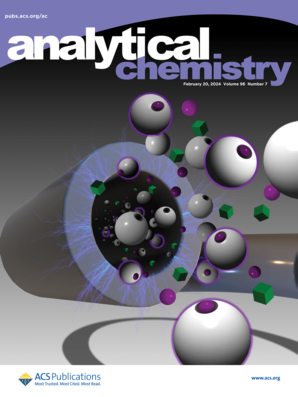狭缝:一种支持深度学习的光谱仪狭缝
IF 6.7
1区 化学
Q1 CHEMISTRY, ANALYTICAL
引用次数: 0
摘要
色散光谱仪的效率和分辨率在光谱学中起着至关重要的作用。在光谱学中实现最佳分析性能需要在采用窄谱输入狭缝以提高光谱分辨率而牺牲吞吐量或使用宽狭缝以牺牲分辨率来提高吞吐量之间取得微妙的平衡。在这里,我们介绍了一个由深度学习模型SlitNET授权的光谱仪狭缝。我们训练了一个神经网络,从低分辨率输入中重建具有增强分辨率的合成拉曼光谱。随后,我们进行了从合成数据到材料实验拉曼数据的迁移学习。利用实验数据对模型进行微调,得到了高分辨率的拉曼光谱。这种增强使我们能够区分以前使用宽缝时无法区分的材料。SlitNET实现的分辨率提高相当于采用10 μm狭缝尺寸,但物理输入狭缝为100 μm。这反过来又使我们能够同时实现高通量和高分辨率,从而提高光学光谱分析的灵敏度和特异性。将深度学习整合到光谱仪中凸显了光子仪器和人工智能的融合,为各种光谱学应用提供了更高的测量精度。本文章由计算机程序翻译,如有差异,请以英文原文为准。

SlitNET: A Deep Learning Enabled Spectrometer Slit
The efficiency and resolution of dispersive spectrometers play crucial roles in optical spectroscopy. Achieving optimal analytical performance in optical spectroscopy requires striking a delicate balance between employing a narrow spectrometer input slit to enhance spectral resolution while sacrificing throughput or utilizing a wider slit to increase throughput at the expense of resolution. Here, we introduce a spectrometer slit empowered by a deep learning model SlitNET. We trained a neural network to reconstruct synthetic Raman spectra with enhanced resolution from low-resolution inputs. Subsequently, we performed transfer learning from synthetic data to experimental Raman data of materials. By fine-tuning the model with experimental data, we recovered high-resolution Raman spectra. This enhancement enabled us to distinguish between materials that were previously indistinguishable when using a wide slit. SlitNET achieved a resolution enhancement equivalent to employing a 10 μm slit size but with a physical input slit of 100 μm. This, in turn, enables us to simultaneously achieve high throughput and resolution, thereby enhancing the analytic sensitivity and specificity in optical spectroscopy. The incorporation of deep learning into spectrometers highlights the convergence of photonic instrumentation and artificial intelligence, offering improved measurement accuracy across various optical spectroscopy applications.
求助全文
通过发布文献求助,成功后即可免费获取论文全文。
去求助
来源期刊

Analytical Chemistry
化学-分析化学
CiteScore
12.10
自引率
12.20%
发文量
1949
审稿时长
1.4 months
期刊介绍:
Analytical Chemistry, a peer-reviewed research journal, focuses on disseminating new and original knowledge across all branches of analytical chemistry. Fundamental articles may explore general principles of chemical measurement science and need not directly address existing or potential analytical methodology. They can be entirely theoretical or report experimental results. Contributions may cover various phases of analytical operations, including sampling, bioanalysis, electrochemistry, mass spectrometry, microscale and nanoscale systems, environmental analysis, separations, spectroscopy, chemical reactions and selectivity, instrumentation, imaging, surface analysis, and data processing. Papers discussing known analytical methods should present a significant, original application of the method, a notable improvement, or results on an important analyte.
 求助内容:
求助内容: 应助结果提醒方式:
应助结果提醒方式:


